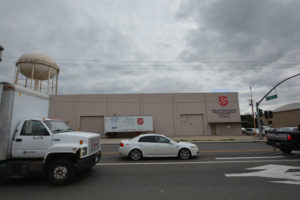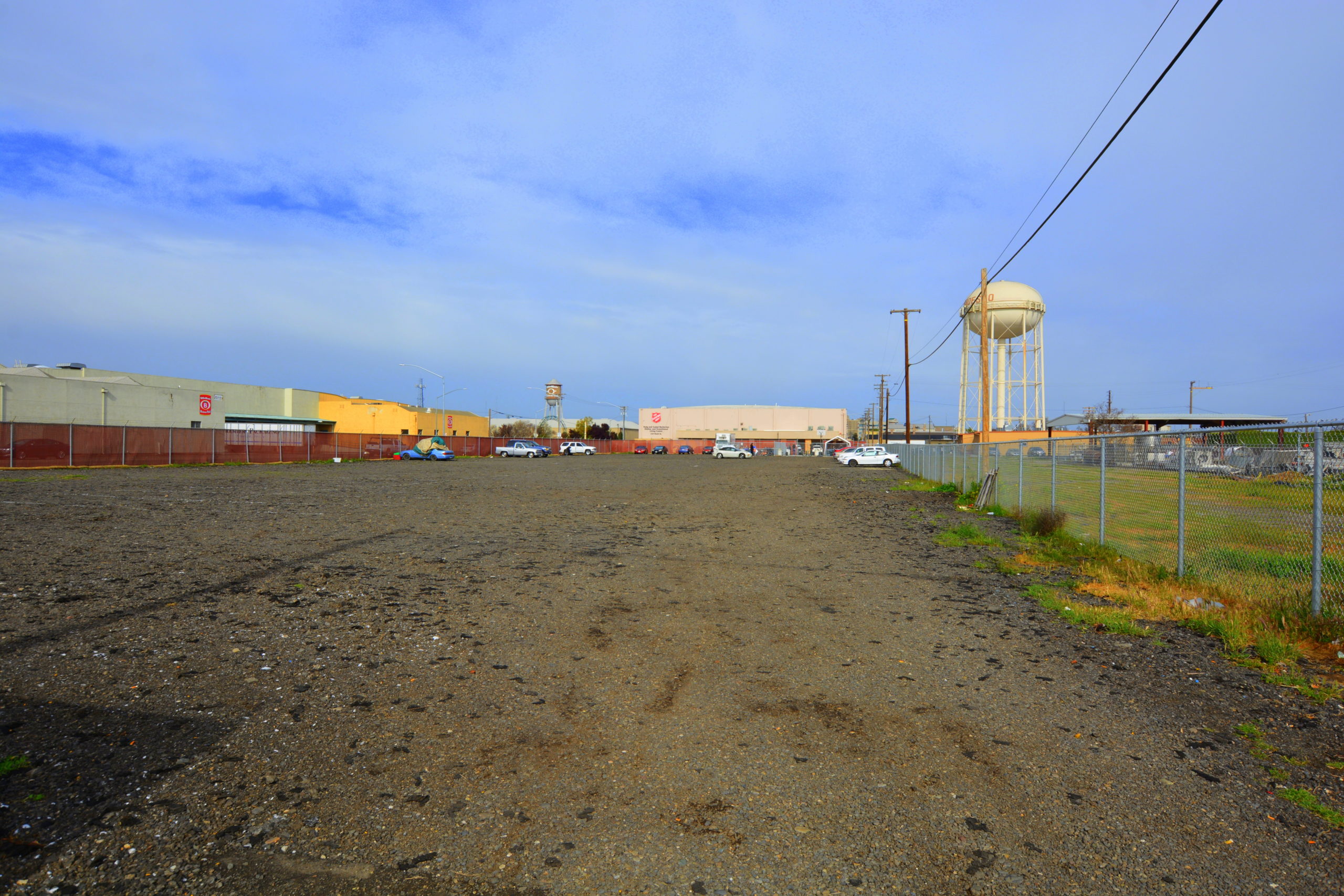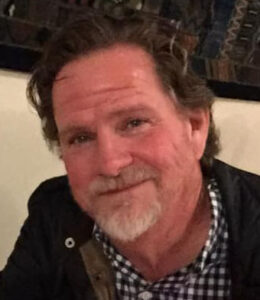
“We have a disconnect with our citizens about what services are available for homeless people and how easy it is to access them,” said Modesto businessman Steven Finch recently.
“People are comforted when they see large buildings and lots of staff workers dealing with homelessness, poverty, and mental illness. They read about $22,000,000 coming to Stanislaus County for homelessness and they think, ‘That should do it; all fixed.’”
In fact, Finch has found that trying to navigate the system of care for people in distress, including the homeless and mentally ill, “takes my every ounce of intellect and perseverance — imagine doing this task without a phone, car, ID, or place to stay, while possibly dealing with mental illness, addiction, or other problems.”
Finch learned about the near-impossibility of getting help for homeless people after he and some fellow volunteers formed Stanislaus Homeless Advocacy and Resource Enterprise (SHARE).
Modeled after Court Appointed Special Advocates (CASA), a volunteer program that pairs members with children in the foster care program, SHARE’s mission includes a focus on assistance for the most vulnerable among homeless people, especially the mentally ill. Finch thought the CASA model would serve the homeless just as well as it does foster children; he learned almost immediately that the homeless system of care is broken and dysfunctional.
“Agencies and non-profits are so strained and understaffed they are at a breaking point,” said Finch. “They refer you back and forth and the referral is sometimes to a phone with no answer and a mailbox that is full. There are many good people in this work, but it seems their hands are tied.”
Finch was dismayed to learn how little money is spent at the city or county level for mental health.
“It’s all pass through from the state,” he said. “That’s not the norm in other communities I reached out to when doing research for starting SHARE.”
Finch learned that a great deal of local budget money for homelessness, “gets burned up by short-term congregate living solutions. These are not a solution for many people, so they end up back on the streets. I spoke with the Director at Family Promise and she said they could ramp up their program to 4-5 times the size and pace, but at the end of the day, there is NO long-term housing for graduates of the program.”

Finch said that people’s lack of confidence in the ability of local government to solve problems, “makes sense for Modestans when you consider the debacles we experienced firsthand with the 2010 housing crisis.” Subsequent failures to reduce homeless numbers have left Finch disillusioned. “I have frankly lost confidence in our cities’ and county’s ability to resolve this issue,” he said.
Finch said that the end point of efforts to help the homeless and mentally ill, “always gets to the real macro issue of affordable housing,” where, “there’s a choke point.”
“We have people working on various solutions, like lots with pallet homes, tents, and other options, but these efforts seem fragmented. Stanislaus Foods has offered the lot space behind Berberian Shelter many times for many purposes; there are other lot spaces that churches and private citizens have talked of making available. So far, nothing concrete has been done or proposed.”
Finch still thinks the CASA model, “has great potential with our homeless individuals and families,” but he’s dismayed by near impossibility of housing people.
Despite what looks like an insurmountable problem, Steve Finch remains optimistic about the good will of people in general. “People want to see what is being done and they are then willing to do and give more. Right now, it just looks like the money goes into a black hole.”
Like most anyone who has actually had on-the-ground experience trying to help the homeless, Finch is frustrated at the widespread perception that there’s plenty of help. The fact is, there isn’t much help, and what help is available is extremely difficult to access.

Finch thinks it would benefit everyone to consolidate resources and devote them to getting people sheltered in places other than congregate living. “We should have everyone meeting once a month and pooling information to move forward on a plan,” he said.
Meanwhile, as our streets, parks, and other public spaces fill with more and more people with nowhere to go, Finch sees, “very little sense of emergency. When it’s freezing cold, it’s an emergency to the people experiencing it,” he said. Responses like, “I can call you back next week at 9AM,” end up accomplishing nothing in the way of addressing the key problem of getting people off the streets.
“It’s really important people understand how little help is available,” said Finch. “We started SHARE with the dual purpose of helping unhoused people navigate a complex system of care while also educating advocates.”
Thus far, Finch has found that navigating that system of care is nearly impossible, especially since the end point is “no long-term housing.” And with the average cost of “affordable” housing approaching $400,000 per unit in the San Joaquin Valley, traditional options for housing homeless people are years away. In a time when we need to start thinking of alternatives to traditional housing, Steve Finch is more than ready.

Good article and I agree with it all!
For steve how can i help
Join our Facebook page and reach out to administrators there. Thanks!
SHARE Stanislaus Homeless Advocacy and Resource Enterprise.
Or email me at [email protected]
Richard,
Here is a link to the SHARE page.
https://www.facebook.com/sharestanislaus
My e-mail is good to. [email protected]
Or message me on Facebook
My profile
https://www.facebook.com/skfinch01/
My family and i are homless we have tried every resoursre out here from c.v.i.c. to c.v.c family promise chss homless program houseing authotity wrote a couple of emails to the mayor and even spoke to city of modesto and its a revolving door .sorry for your situation they say did you call the mission.I called the cov 19 hotline and what the lady said who answrred the other line suprised me she said ots the goverment and countys resposability to house the homless at this during the pandemic.The resourses the lack of funds and affordable houseing has me my husband and 2 teenagers slerping in a car .There is no help out here and no money for us homless people due to waiting for unemployment benifits to be issued .I feel like the county and workers dont seem to vare there rude and un patient
Hi Shelly.
If you’d like SHARE to work with you please send me an email at [email protected] and we’ll see what can be done.
My fiance and I are in the same boat… Thru no fault of our own ended up victims of crimes perpetrated by our landlord! AKA roommate In Which
ended up with a judge ordering a criminal restraining order on her Thus making us have to move with nowhere to go Oh shoot Decided to insult To injury An evicted us An oddly In court for the eviction We weren’t allowed to ask questions and we weren’t even asked our side of the Story And here we are Living In Our Vehicle as well Scared all night long of that knock that you get from the police Threatening to tow your vehicle Knowing That’s all you have left in life I’ve never been Been made 2 feel like such a small Insignificant Not even a person Not even As high class As a piece of trash From a Police Department Sheriff Department County State workers Or a quart Until I ended up in my car In the interim of the mess she has made and Continues 2 make of our lives, I get diagnosed with a rare incurable Autoimmune disease that makes every day tasks almost unbearable and ..very vulnerable to covid, and spending almost all day calling or emailing or writing everything or entity we can find.. There’s nothing
. No help at all Even with Written recommendation from A hospital And if his addition For the needs we sheltered And quarantined during the pandemic for my own health There is still nothing
Thank you Steve for doing this. Why is it so fractured? What happened to the group think of Focus on Prevention and why isn’t this group engaged in this project? The mission seems to make sense. We also need to bring a larger point of view, ie urban designers since some of this is structural, i.e affordable spaces like Pallet or other micro housing options, and land use people to find spaces where some of these communities can actually be built. Still, like MOES did, we need to have a place where services, support and donations are all coordinated. We need to take what worked in MOES and build on new thinking for structural solutions.
Chris,
I am as befuddled at times as you are. We need a coordinated effort. Some people seem to like it fractured, by design.
We need to add some new people, with new ideas, to Focus on Prevention.
Frank Ploof is working on some ideas for housing structures and we have spaces offered up for them. Right now, everyone seems to be working on their “own” solution.
We need to put everyone in a room, including some contractors etc and make this happen with some of this money we are getting.
If we don’t it will all go to emergency shelters. These are very valuable, but don’t move the dial on homelessness long term. IMHO
I would be happy to discuss this with anyone at any time.
209-993-4984
[email protected]
The ‘we’ are missing in action…
We must change our laws and re-think this problem!
If the desired end is a system the offers treatment for the mentally ill and substance dependent ending with a long-term housing option, nothing we are doing now can deliver these goals.
We must consider Involuntary civil commitment as a viable option. We should clear our public places of these people throughout the United States and deliver them to centers where they can be triaged by professionals to determine which is the best legal intervention in each case.
A judge, or someone acting in a judicial capacity, may order that a person with symptoms of a serious mental disorder, and meeting other specified criteria, be confined in a psychiatric hospital or receive supervised outpatient treatment for some period of time. Standards and procedures for commitment to provided by state law, in every state.
Every person which is determined to be incapacitated by a substance abuse or mental health problem to a point that they are involuntarily confined would be eligible for benefits under state or federal programs and therefore have an ‘income’ that could be held for them in a forced savings account during their course of treatment.
Those that are physically able could be recruited into ‘building trades programs’ in which they could be trained in carpentry, plumbing, electrical services, dry wall and other construction areas and even project management, bookkeeping, coding and other IT technologies.
These programs could be utilized to convert surplus properties to offer true ‘low cost housing’ in the form of ‘planned urban developments’ in which the ‘common areas’ support services specific to the long-term need of that community. Former shopping malls could be ideal.
At the end, these individuals could have the satisfaction of the acquisition of a marketable skill and of having been a contributor to something actually being built!
When their ‘rehabilitation’ is deemed complete, the money they have in their ‘savings account’ could be applied to a ‘down payment’ on a condominium in one of these projects. Their monthly payment would be limited to 30% of their income with the caveat that they must remain in that condominium for at least 10 years before they can sell, encumber or trade it.
These projects should be managed by NGOs, for obvious reasons.
I can volunteer!
That’s great!
Here is a link to the SHARE page.
https://www.facebook.com/sharestanislaus
My e-mail is good to. [email protected]
Or message me on Facebook
My profile
https://www.facebook.com/skfinch01/
A Very well written article And Very true Here in Modesto ,My Boyfriend and I are homeless Sleeping in our van ,
I am wheelchair bound and have a few serious health conditions No matter how hard we try to get off the streets it just hasn’t happened And with covid 19 Case’s Rampantly rising Daily I’m Worried I’m going to get it And the chances of me surviving are slim Tiny Homes , Converted shed’s, Converted rail cars ,Travel trailers And A park and sleep For those homeless sleeping in vehicles Would Be great to see
Please reach out and we can see what we can do, as well as keep you informed on the progress of alternatives.
Here is a link to the SHARE page.
https://www.facebook.com/sharestanislaus
My e-mail is good to. [email protected]
Or message me on Facebook
My profile
https://www.facebook.com/skfinch01/
Im homeless and need some where to go im recently new to becoming a diabetic and now take 2 types of insulin. That need to be in a refrigator at all times or the insulin becomes useless and although i have medical that pays for the medicine . its not cheap so if it gets ruiened than its a waiste of medical money. And with summer approaching i dont know what im gonna do if theres any help out there please help i need the help. Imm 44 year old female that is strulging living in my car. My health isint that great my legs sweel alot from sleeping in the driver seat. Any solutions that anyone is willing to suggest will pissibly help. Thank You
Maria A Camacho
Hi Maria. If you haven’t done so yet, go to the Access Center on D st and get assessed At a minimum you should try to get in one of the homeless shelters until something more permanent is available.
You can contact me directly at [email protected] if you have any questions.